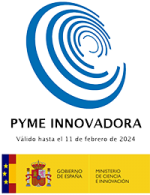Esta web utiliza cookies para que podamos ofrecerte la mejor experiencia de usuario posible. La información de las cookies se almacena en tu navegador y realiza funciones tales como reconocerte cuando vuelves a nuestra web o ayudar a nuestro equipo a comprender qué secciones de la web encuentras más interesantes y útiles.
Eurobarómetro. Patient Safety and Quality of Care
INTRODUCTION
The safety of patients receiving healthcare, including the probability of contracting healthcare-associated infections, is a serious concern for the European Union. It is estimated that 8-12% of patients admitted to hospital in the EU suffer from adverse events, such as healthcare-associated infections (which account for approximately 25% of adverse events); medication-related errors; surgical errors; medical device failures; errors in diagnosis; and failure to act on the results of tests1.
On any given day one in 18 patients in European hospitals have at least one healthcareassociated infection2. Every year an estimated 4.1 million patients acquire a healthcareassociated infection in the EU, and at least 37,000 die as a result. Furthermore it is estimated that 20-30% of healthcare-associated infections can be prevented by intensive hygiene and control programmes3.
These are not only public health issues, but also represent a significant economic burden. Recognising that a high proportion of adverse events are preventable, and have their roots in systemic issues, in 2009 the Council of the European Union adopted a series of recommendations regarding measures designed to improve patient safety in general and the prevention and control of healthcare-associated infections (HAIs) in particular4. The Recommendation complements other EU initiatives, such as the directive 2011/24/EU on the application of patients’ rights in cross-border healthcare, which seeks to clarify patients’ rights in another EU Member State.
The Commission is monitoring the progress of the implementation of the Recommendation and in November 2012 published a report assessing progress at Member State and EU level.5
Most Member States have taken a variety of actions as envisaged by the
Recommendation. Most Member States have embedded general patient safety as a priority in public health policies and designated a competent authority with responsibility in this area. Almost all countries have implemented a combination of actions to prevent and control healthcare-associated infections (HAI), in most cases as part of a national/regional strategy and/or action plan.
Nevertheless, there are still a number of areas of the Recommendation with considerable room for improvement, mainly with regard to empowering patients, i.e. providing them with information about patient safety measures, the right to informed consent, complaint procedures and redress mechanisms. The Commission will publish a second implementation report in 2014.
Recent Posts














